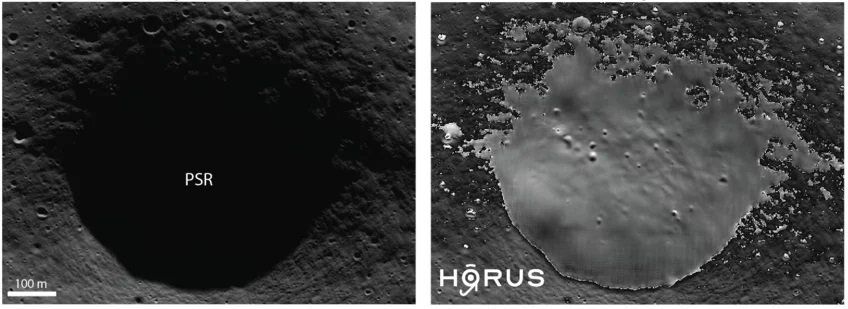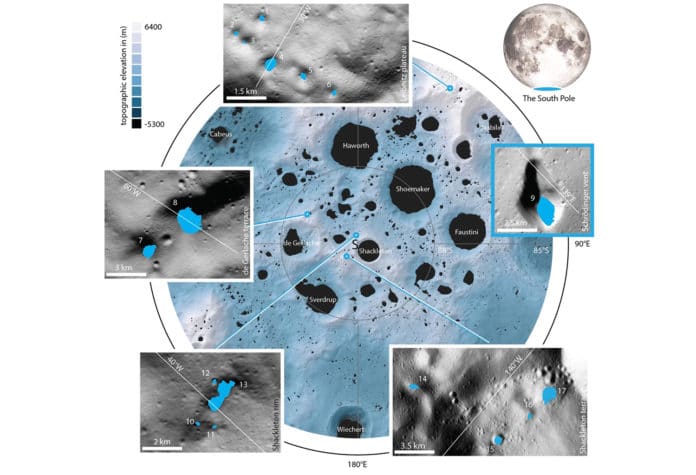Lunar craters and depressions in the polar regions of the Moon offer hope for limited water resources. Using AI, scientists from MPS, the University of Oxford, and the NASA Ames Research Center have now taken a closer look at some of these regions.
Capturing images of this dark region is quite tricky as the only light sources in the region are scattered light. Because the spacecraft is in motion, the LRO images are completely blurred at long exposure times. Also, these images are dominated by noise, making it hard to distinguish real geological features.
Scientists addressed this problem by developing a machine learning algorithm called HORUS (Hyper-effective nOise Removal U-net Software). The algorithm cleans up such noise images.
Using almost 70,000 LRO calibration images of the dark side of the Moon and information about camera temperature and the spacecraft’s trajectory, the algorithm distinguishes which structures in the image are artifacts and which are real.
Thanks to the method, scientists could re-evaluate images of 17 shadowed regions from the lunar south pole region. These regions are between 0.18 and 54 square kilometers in size.
The images showed small geological structures such as boulders or tiny craters, only a few meters across much more clearly than before.

Craters of this type could contain frozen water, making them attractive targets for future lunar missions. Three craters have turned out to lie within the just-announced mission area of NASA’s Volatiles Investigating Polar Exploration Rover (VIPER), which is scheduled to touch down on the Moon in 2023.
Ben Moseley of the University of Oxford, a co-author of the study, said, “With the help of the new HORUS images, it is now possible to understand the geology of lunar shadowed regions much better than before. For example, the number and shape of the small craters provide information about the age and composition of the surface. It also makes it easier to identify potential obstacles and hazards for rovers or astronauts.”
“In one of the studied craters, located on the Leibnitz Plateau, we discovered a strikingly bright mini-crater. Its comparatively bright color may indicate that this crater is relatively young.”
MPS-scientist Valentin Bickel, the first author of the new paper, said, “The new images do not provide evidence of frozen water on the surface, such as bright patches. Some of the regions we’ve targeted might be slightly too warm. Likely, lunar water does not exist as a visible deposit on the surface at all – instead, it could be intermixed with the regolith and dust, or maybe hidden underground.”
Scientists are further planning to use HORUS to study as many shadowed regions as possible.
Journal Reference:
- V .T. Bickel, B. Moseley, I. Lopez-Francos, M. Shirley: Peering into lunar permanently shadowed regions with deep learning. Nature Communications, September 23rd, 2021. DOI: 10.1038/s41467-021-25882-z
